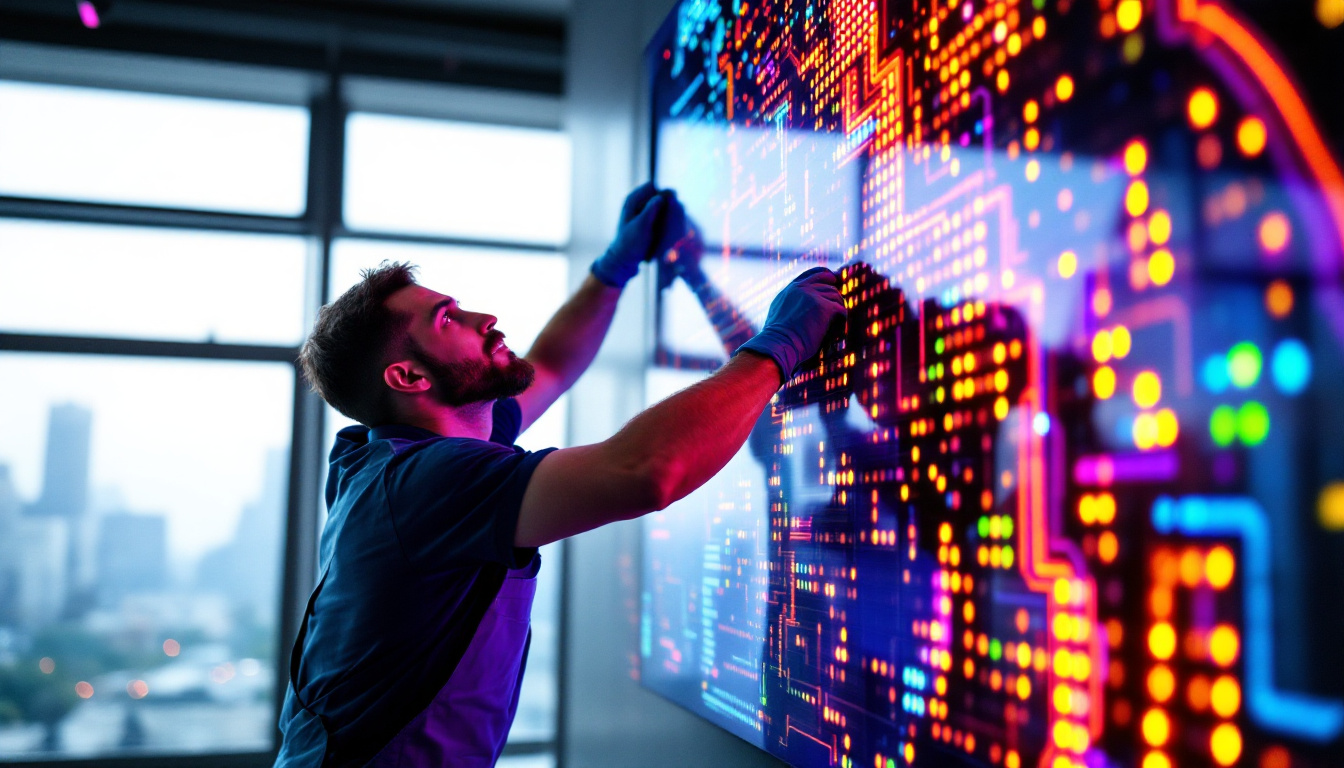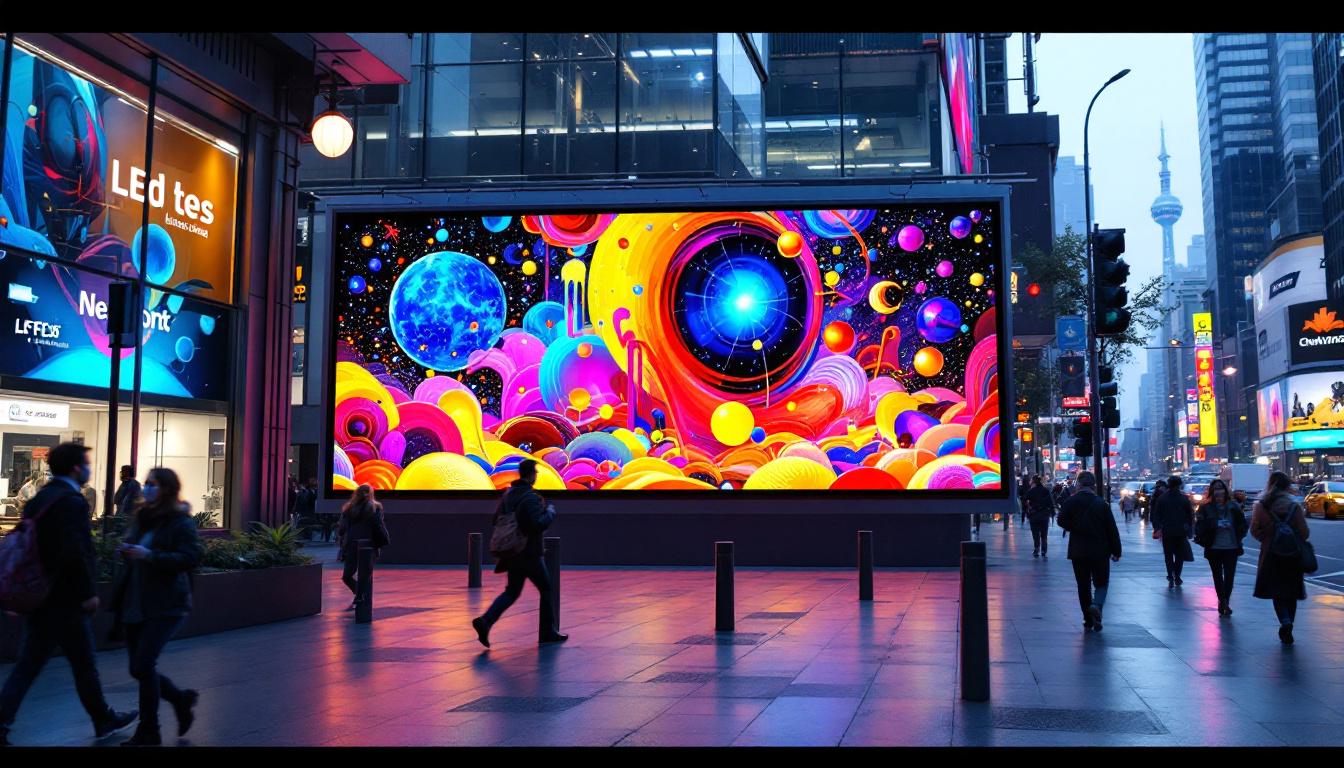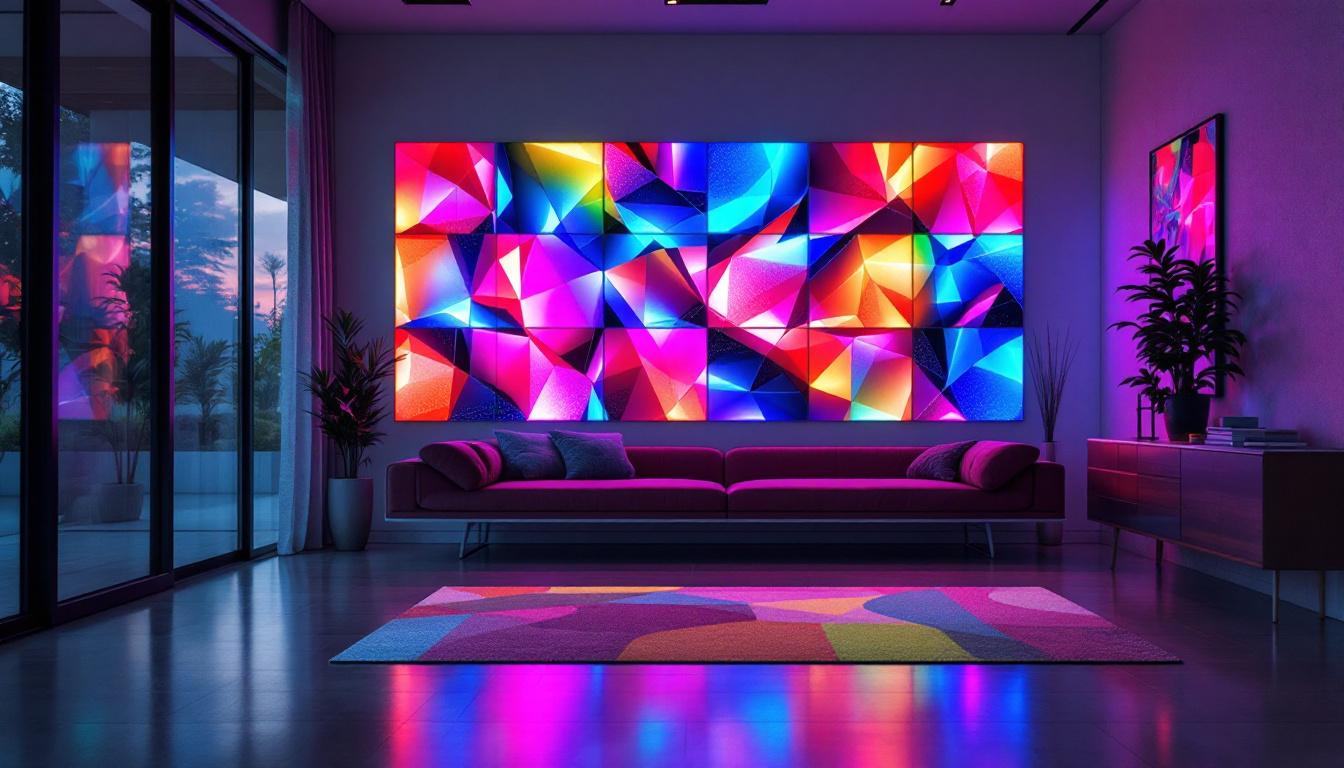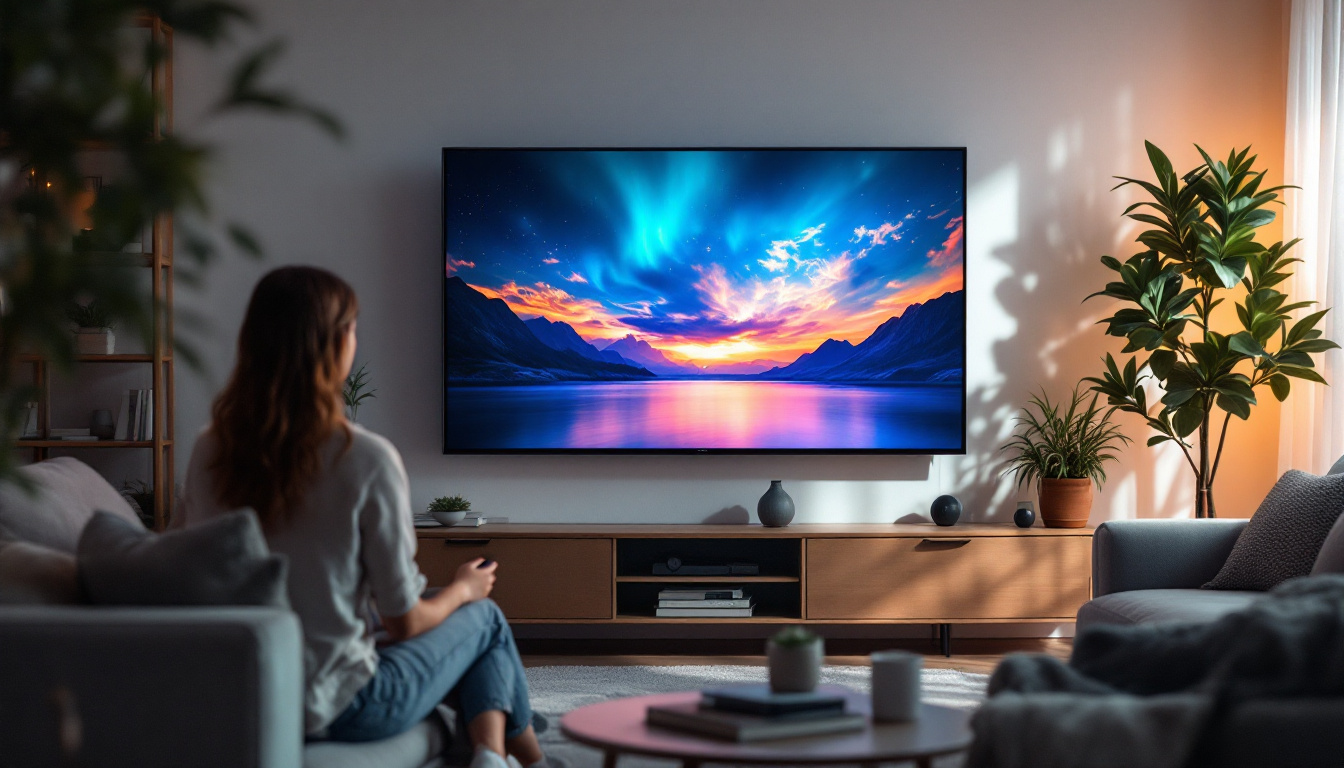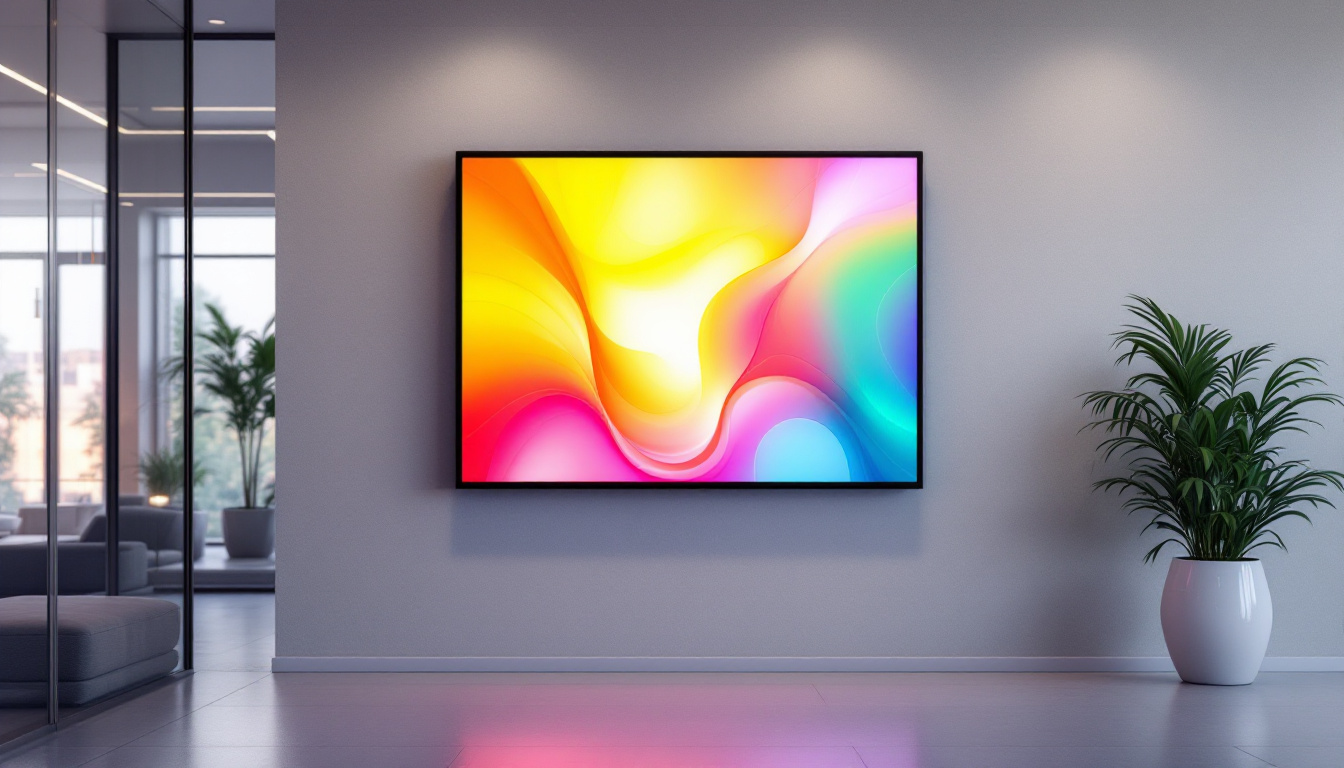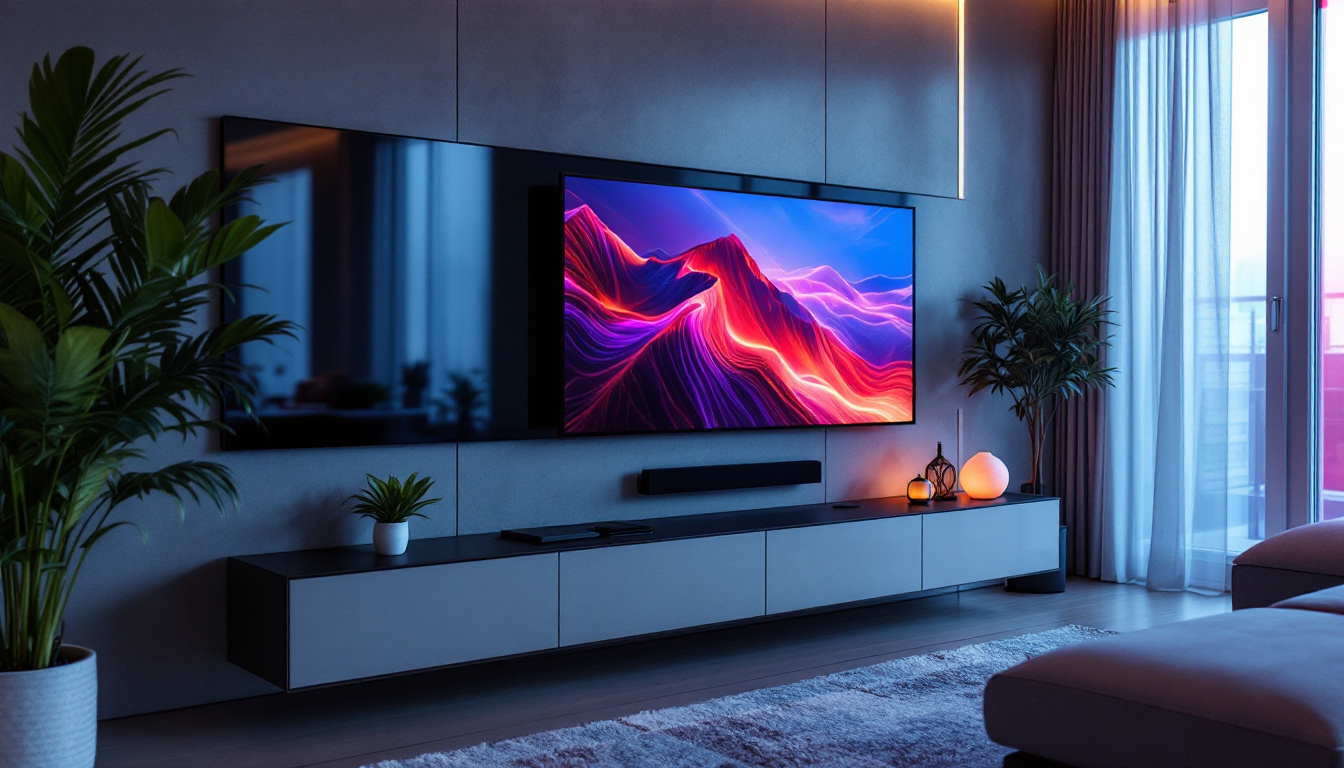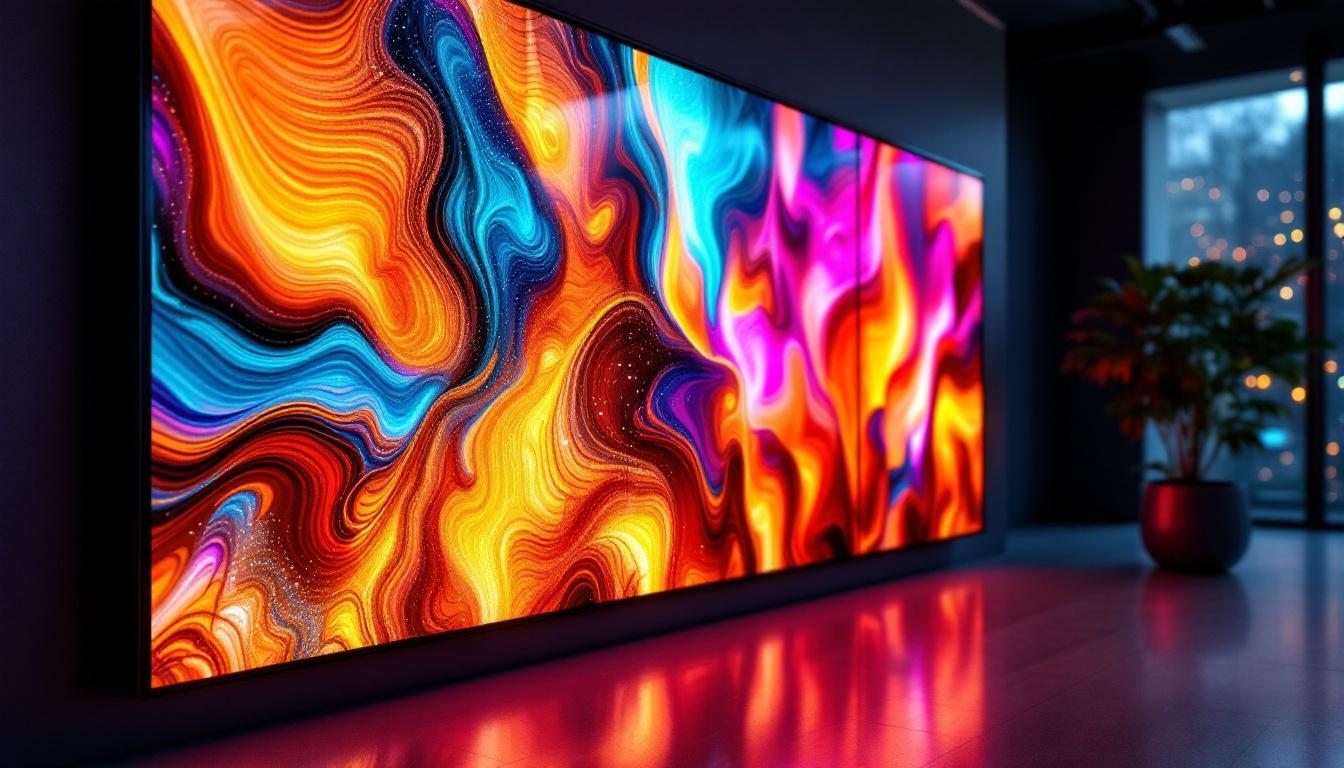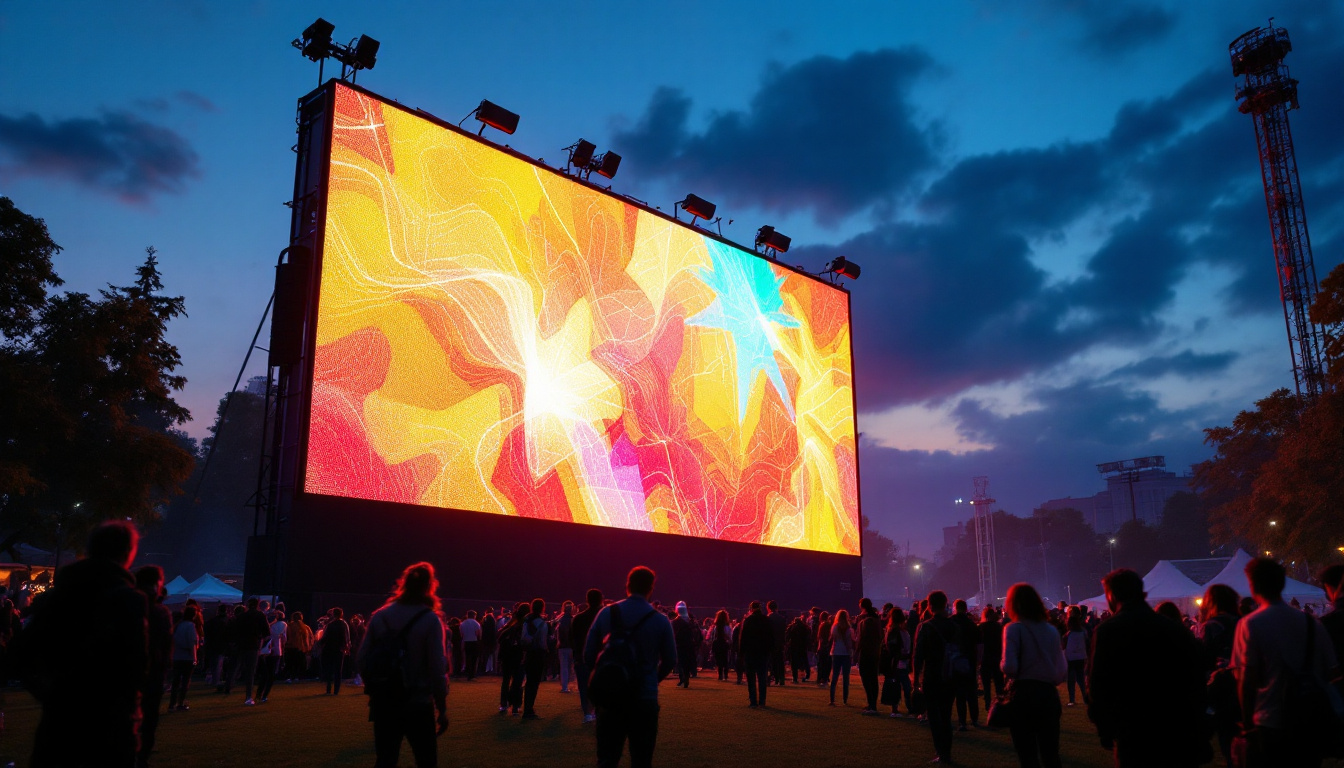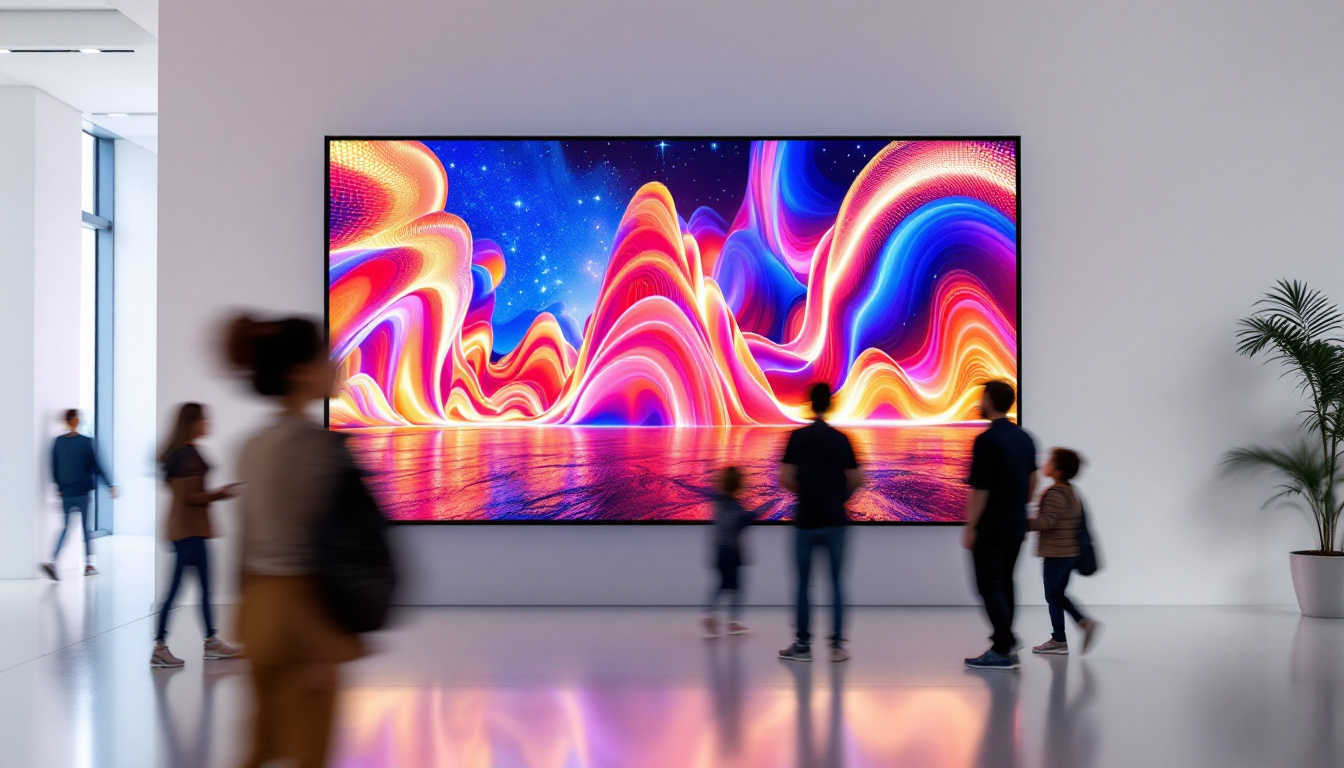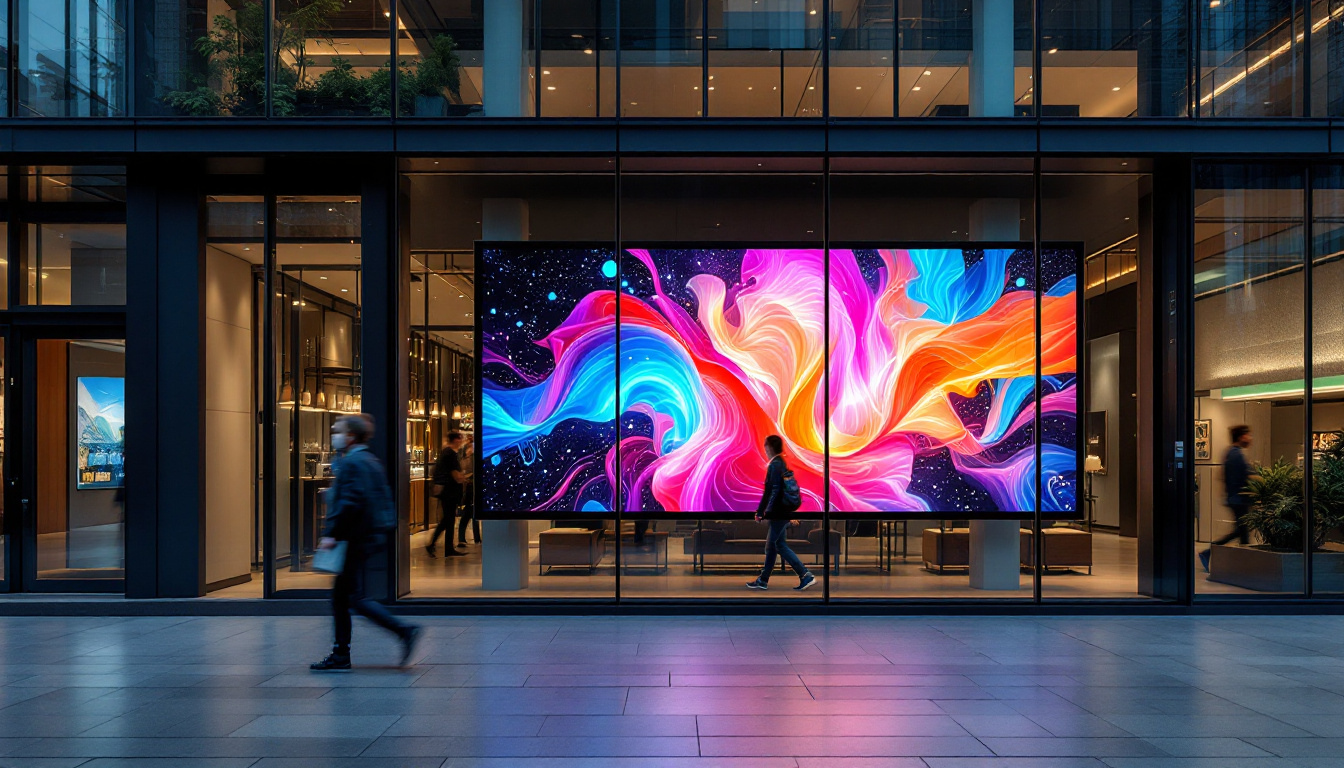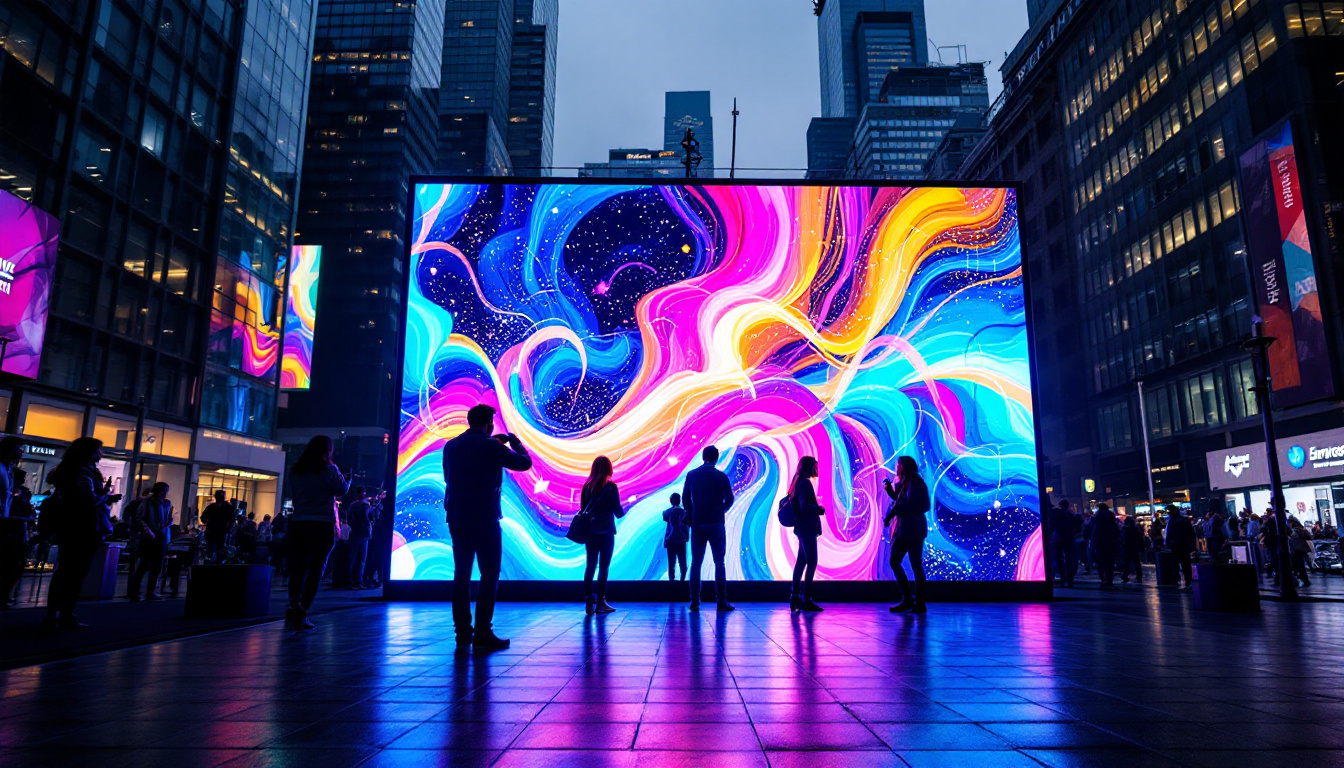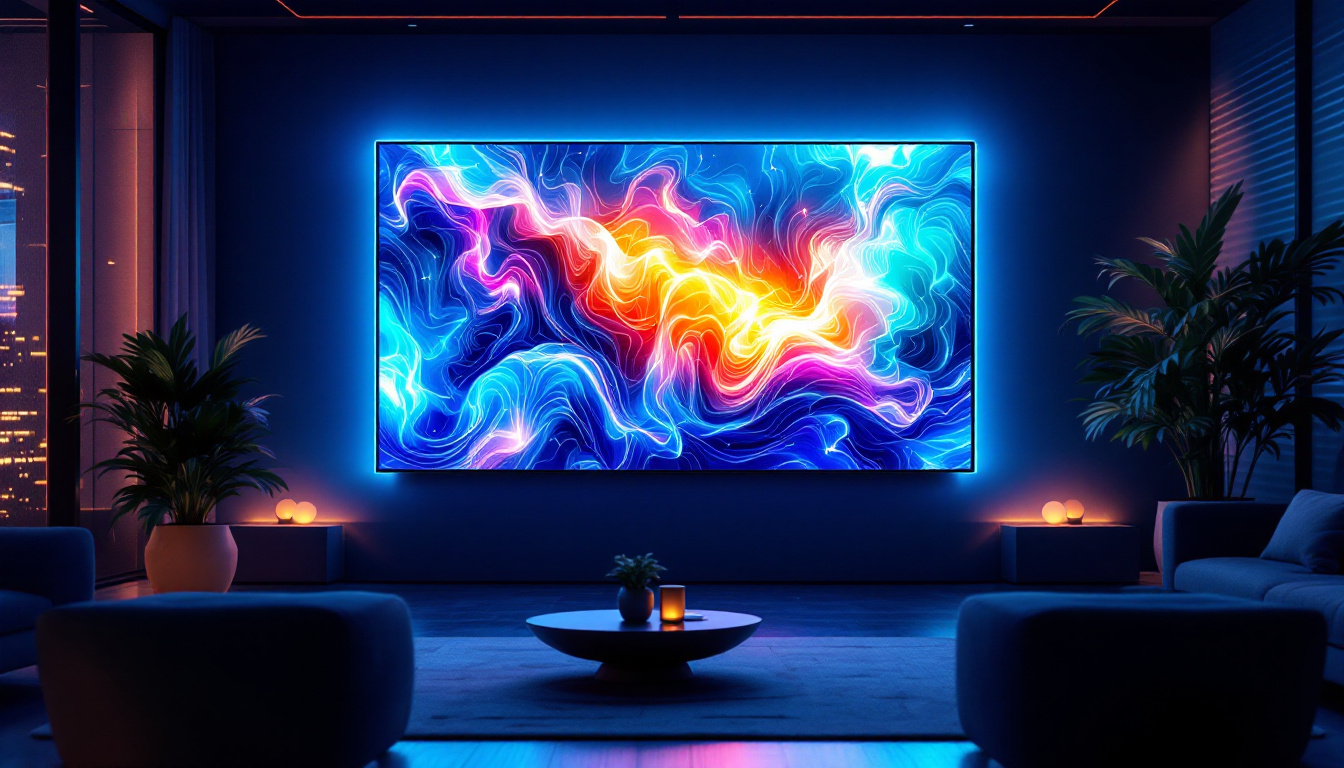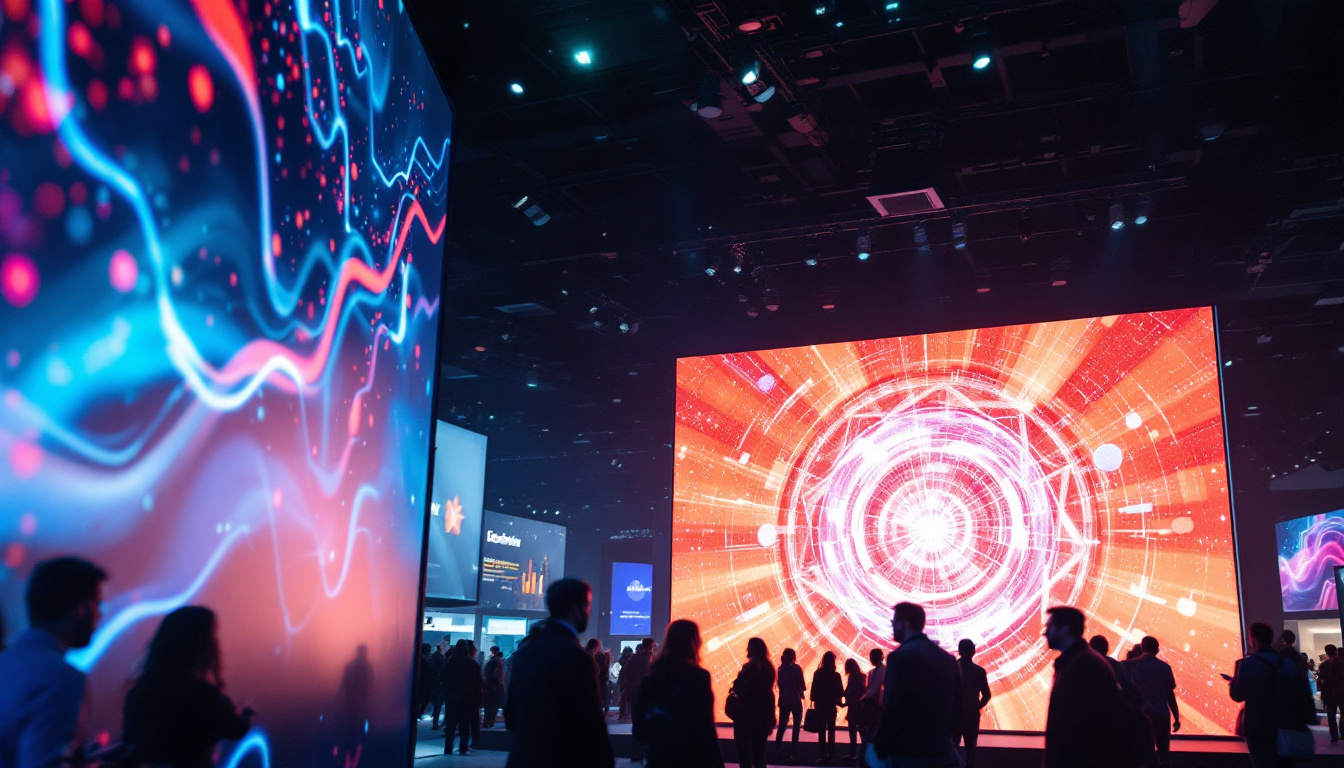In the realm of computer displays, the evolution of technology has led to significant advancements, particularly in the area of 3D visualization. Among the various types of displays available, passive 3D computer monitors equipped with LED technology have gained attention for their unique capabilities. This article delves into the intricacies of passive 3D monitors, their LED display technology, and their applications in various fields.
Understanding Passive 3D Technology
Passive 3D technology is a method of displaying three-dimensional images without requiring the viewer to wear special glasses that actively sync with the screen. Instead, it utilizes polarized glasses that filter the light coming from the screen, allowing each eye to perceive a slightly different image. This creates a sense of depth and dimension, making the viewing experience more immersive.
The Mechanics of Passive 3D Displays
At the core of passive 3D technology is the use of polarization. The screen emits light that is polarized in different directions. When viewers wear polarized glasses, each lens allows only the light that matches its polarization to pass through. This means that each eye sees a different image, leading to the perception of depth.
Passive 3D displays typically use a technique known as interlacing, where the screen alternates between displaying images meant for the left and right eyes. This rapid alternation, combined with the polarization from the glasses, creates a seamless 3D effect. The result is an engaging viewing experience that does not induce the fatigue often associated with active 3D systems. Additionally, passive 3D technology can be implemented in various display formats, including televisions, computer monitors, and even large-scale cinema screens, making it versatile for different viewing environments.
Advantages of Passive 3D Monitors
One of the primary advantages of passive 3D monitors is their affordability. Since they utilize simpler technology compared to active 3D displays, the production costs are lower, making them more accessible to consumers. Furthermore, passive systems generally consume less power, contributing to energy savings over time.
Another significant benefit is comfort. Users often report less eye strain when using passive 3D systems, allowing for extended viewing periods without discomfort. This makes passive 3D monitors particularly appealing for applications such as gaming, movie watching, and professional use in design and simulation environments. Moreover, the lightweight nature of polarized glasses enhances user experience, as they are typically more comfortable to wear for long durations compared to the bulkier active glasses that require batteries and synchronization with the display. This ease of use can be particularly advantageous in social settings, where multiple viewers can enjoy the 3D experience without the hassle of managing complex equipment.
In addition to comfort and cost-effectiveness, passive 3D technology also supports a wider viewing angle. Viewers can enjoy the 3D effects from various positions in a room without losing the depth perception that can often diminish in active 3D systems. This feature makes passive 3D displays ideal for group settings, such as family movie nights or collaborative workspaces, where multiple people can engage with the content simultaneously. As the technology continues to evolve, we may see further enhancements in image quality and depth perception, making passive 3D an even more attractive option for consumers and professionals alike.
LED Display Technology
LED (Light Emitting Diode) technology has revolutionized the way displays are manufactured and utilized. In the context of passive 3D monitors, LED technology enhances image quality, brightness, and energy efficiency. Understanding how LED displays work is crucial to appreciating their role in passive 3D systems.
How LED Displays Function
LED displays operate by using a matrix of tiny light-emitting diodes to create images. Each diode can emit different colors, which combine to form a full spectrum of colors on the screen. This technology allows for vibrant colors, high contrast ratios, and improved brightness levels compared to traditional LCD screens.
In passive 3D monitors, LED technology plays a vital role in delivering clear and sharp images. The brightness offered by LED displays enhances the 3D effect, making it more pronounced and enjoyable. Additionally, LED screens are known for their longevity and durability, reducing the need for frequent replacements.
Comparing LED with Other Display Technologies
When comparing LED displays to other technologies such as LCD or OLED, several factors come into play. While LCD screens can offer good image quality, they often fall short in brightness and color vibrancy compared to LED. OLED displays, on the other hand, provide exceptional contrast and color accuracy but can be more expensive and prone to burn-in issues.
LED displays strike a balance between performance and cost, making them an attractive option for passive 3D monitors. They provide the necessary brightness and color depth to create an immersive 3D experience without the drawbacks associated with other technologies.
Applications of Passive 3D LED Monitors
The versatility of passive 3D LED monitors allows them to be utilized across various fields. From entertainment to professional applications, their ability to deliver high-quality 3D visuals has made them a valuable tool in numerous industries.
Entertainment and Gaming
In the realm of entertainment, passive 3D monitors have transformed the way audiences experience movies and video games. The immersive nature of 3D visuals enhances storytelling and gameplay, drawing viewers into the narrative. Game developers have increasingly adopted passive 3D technology to create more engaging environments, allowing players to feel as though they are part of the action.
Moreover, the comfort of passive 3D systems makes them ideal for extended gaming sessions or movie marathons. Viewers can enjoy the benefits of 3D without the discomfort often associated with active 3D glasses, which can be heavy and require battery power.
Medical Imaging and Simulation
In the medical field, passive 3D LED monitors are used for imaging and simulation purposes. Surgeons and medical professionals can benefit from enhanced visualization of complex structures, allowing for better planning and execution of procedures. The depth perception provided by 3D imaging aids in understanding spatial relationships within the body, leading to improved outcomes.
Additionally, medical training programs utilize passive 3D displays for simulations. Trainees can engage in lifelike scenarios, honing their skills in a controlled environment. The ability to visualize anatomy in three dimensions is invaluable for medical education and practice.
Architectural Visualization
Architects and designers have also embraced passive 3D LED monitors for visualization purposes. These monitors allow professionals to present their designs in a more immersive manner, helping clients to better understand spatial arrangements and design concepts. The depth provided by 3D visuals can significantly enhance presentations, making it easier to convey ideas and foster collaboration.
Furthermore, passive 3D displays can be used in virtual reality environments, where architects can walk clients through their designs in a simulated space. This level of interaction and engagement can lead to more informed decision-making and ultimately better design outcomes.
Challenges and Considerations
Despite the numerous advantages of passive 3D LED monitors, there are challenges and considerations that potential users should be aware of. Understanding these factors can help in making informed decisions regarding their use.
Viewing Angles and Brightness
One of the limitations of passive 3D displays is that they can have narrower viewing angles compared to active 3D systems. This means that the 3D effect may diminish when viewed from certain angles, which can be a concern in environments where multiple viewers are present. Ensuring that the monitor is positioned correctly can mitigate this issue, but it remains a consideration for users.
Additionally, while LED displays are generally bright, the brightness levels can vary based on the specific model and manufacturer. Users should evaluate the brightness specifications to ensure that the monitor meets their needs, particularly in well-lit environments.
Content Availability
Another factor to consider is the availability of content that supports passive 3D viewing. While there are many movies and games designed for 3D experiences, not all content is optimized for passive systems. Users may need to invest time in finding suitable media that takes full advantage of the capabilities of passive 3D monitors.
Furthermore, as technology continues to evolve, the industry may shift towards newer display methods, potentially impacting the availability of passive 3D content in the future. Staying informed about trends and developments can help users navigate these changes effectively.
The Future of Passive 3D LED Monitors
The future of passive 3D LED monitors appears promising as technology continues to advance. Innovations in display technology, coupled with increasing demand for immersive experiences, are likely to drive further developments in this area.
Technological Advancements
Ongoing research and development in display technologies may lead to improvements in image quality, brightness, and energy efficiency. As manufacturers continue to refine their processes, consumers can expect to see even more vibrant and lifelike visuals from passive 3D LED monitors.
Additionally, advancements in content creation tools and software may facilitate the production of more 3D content, making it easier for creators to develop engaging experiences for passive 3D systems. This could lead to a broader range of applications across various industries, from entertainment to education and beyond.
Market Trends
As passive 3D technology gains traction, market trends may shift to reflect the growing interest in immersive experiences. Consumers are increasingly seeking out displays that offer not only high-quality visuals but also comfort and accessibility. This trend may encourage manufacturers to prioritize passive 3D systems in their product lines.
Furthermore, as more industries recognize the benefits of passive 3D displays, demand may increase in sectors such as education, healthcare, and design. This could stimulate further innovation and investment in passive 3D technology, paving the way for exciting developments in the years to come.
Conclusion
Passive 3D computer monitors equipped with LED technology represent a significant advancement in display technology, offering a unique combination of affordability, comfort, and immersive experiences. Their applications span various fields, from entertainment to medical imaging and architectural visualization, showcasing their versatility and value.
While challenges such as viewing angles and content availability exist, the ongoing advancements in technology and market trends suggest a bright future for passive 3D LED monitors. As consumers and professionals alike seek out more engaging and immersive experiences, this technology is poised to play a pivotal role in shaping the future of visual displays.
In summary, passive 3D LED monitors are not just a passing trend; they are a testament to the evolution of display technology, providing users with the tools they need to explore, create, and engage in three-dimensional environments.
Discover the Future of 3D Visuals with LumenMatrix
Ready to elevate your visual experience to the next dimension? LumenMatrix, a pioneer in LED display technology, invites you to explore our comprehensive range of LED display solutions. From immersive Indoor LED Walls to dynamic Outdoor Displays, and from versatile Vehicle LED Displays to innovative Custom and Transparent LED options, we have everything you need to bring your 3D visions to life. Experience the pinnacle of engagement and brand visibility with our cutting-edge displays. Check out LumenMatrix LED Display Solutions today and transform the way you share your message with the world.



